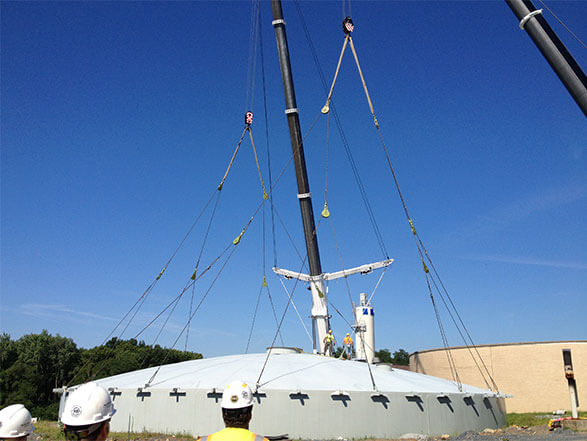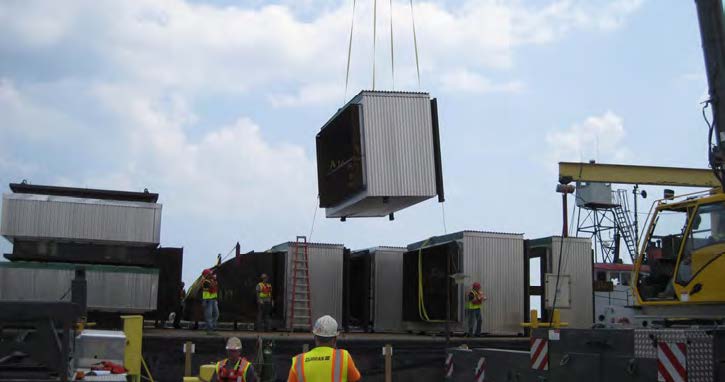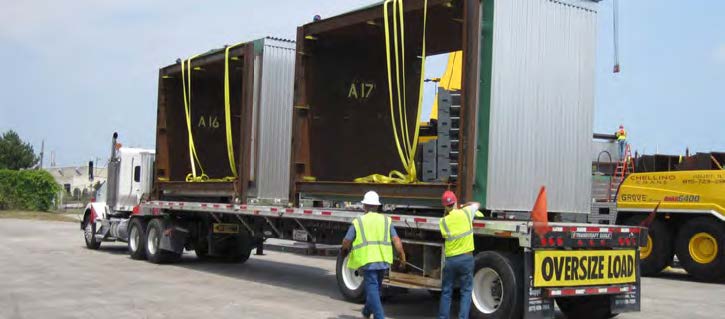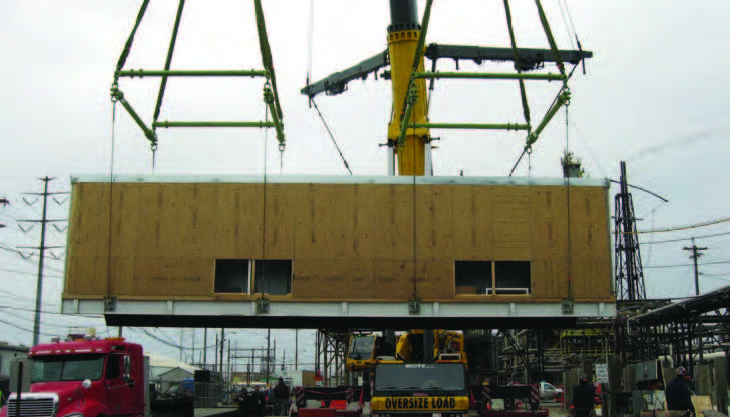Safety Tips for Maintaining Wire Ropes and Slings
Wire rope is a machine, and a rather complex machine. There are no precise rules to determine exactly when a wire rope sling has passed its service or expiration date. There are guidelines, though, to follow to know whether a sling is suitable for continued use or needs replacement.
Wire rope slings should be inspected prior to use to identify potential hazards or damage and to determine whether they are suitable for continued use. The Occupational Safety and Health Administration (OSHA) and ASME B30.9 standards dictate inspection intervals and procedures. They also require that inspections be executed by the sling user.
Basic Inspection Criteria
According to the Wire Rope Technical Board, proper inspection should follow a systemic procedure, as described in the Wire Rope Sling Users Manual:
- First, it is necessary that all parts of the sling are readily visible. The sling should be laid out so every part is accessible.
- Next, the sling should be sufficiently cleaned of dirt and grease so wires and fittings are easily seen. This can usually be accompanied with a wire brush or rags.
- The sling should then be given a thorough, systematic examination throughout its entire length, paying particular attention to sections showing the most wear.
- Special attention should also be paid to fittings and end attachments and areas of the sling adjacent to these fittings.
- When the worst section of a sling or the weakest link has been located, this area should then be carefully checked against the criteria.
- Label or identify slings that are inspected.
- Keep records of inspections that include dates and corresponding conditions of slings.
- Dispose immediately of slings that are rejected.
Ideally, other systems for ensuring the quality of your slings should be part of your warehouse or facility inspection procedures. For example, Lifting Gear Hire is completing the final stages of adopting a new, streamlined RFID tracking system to record when equipment was inspected, who inspected it, and if and when the equipment was damaged. You can also seek out good quality training resources or learning institutes that teach courses on how to properly inspect wire rope slings—preferably ones that also provide Rigging Gear Inspector certification.
Storage Procedures
A sling’s service life can be extended substantially with good care and maintenance. Proper storage demands that slings be housed in an environment where they are not exposed to water, extreme heat, corrosives, liquids, or sprays and not stored in a kinked position, among other things.
Slings should never be left beneath loads or lying around where they can be susceptible to damage. Steel is not impervious to destruction. Slings should be housed in a rack when not in use. Custom racks can be constructed to accommodate slings of any size.
As with most machines, wire rope is lubricated at the time of manufacture. No supplementary lubrication is generally required if the sling is used under typical conditions. However, if a sling is stored outside or in any environment that could cause corrosion, additional lubrication should be applied to prevent rusting or corrosion. If the wire rope needs to be lubricated, the same type of lubrication as used during manufacture should be applied.
The storage temperature plays an important role in preserving the lifespan of a sling. Generally, steel-cored slings should not be used at temperatures above 400° F or below –40° F. Although it is not always easy to see when a sling has been damaged, a general rule of thumb is that if there are any suspicions that a sling’s integrity may have been compromised, it should be taken out of service right away or, at the very least, the manufacturer should be consulted.
Safe Operating Temperatures
Follow the sling manufacturer’s recommendations regarding use of steel-cored wire rope slings of any grade at temperatures above 400° F or below –60° F. At these temperature extremes, the internal structure of the steel may start to realign. If a sling will be or has been used in extreme temperatures, consult the manufacturer about ways to prevent degradation.
Removal from Service
OSHA specifies that wire rope slings must be removed from service in any of the following conditions:
- Ten randomly distributed broken wires in one rope lay or five broken wires in one strand in one rope lay.
- Wear or scraping of one-third the original diameter of outside individual wires.
- Kinking, crushing, bird-caging, or any other damage resulting in distortion of the wire rope structure.
- Evidence of heat damage, seen as wire discoloration, burn marks, weld splatter, etc.
- End attachments that are cracked, deformed, or worn.
- Hooks that have been opened more than 15 percent of the normal throat opening, measured at the narrowest point, or twisted more than 10 degrees from the plane of the unbent hook.
- Corrosion of the rope or end attachments. Only extreme corrosion is necessary to reject a sling. Light corrosion does not substantially affect the strength of a sling.
ASME B30.9 has similar standards as well as the following:
- Bent hooks can be no more than 5 percent over the normal throat openings, measured at the narrowest point from the plane of the unbent hook.
- Any evidence of eye splices that have slipped, tucked strands that have moved, or pressed sleeves that show serious damage may be sufficient cause to reject a sling.
- A very common cause of damage is the kink which results from pulling through a loop while using a sling, thus causing wires and strands to be deformed and pushed out of their original position. This kink unbalances the sling, reducing its strength.
Should a sling be determined to be worn out or damaged beyond use, the inspector should immediately tag the sling as “do not use.” The sling should be destroyed as soon as possible by cutting the eye and fittings from the rope with a torch. Cutting the body of the sling is also appropriate. This method of destruction should deter another employee from mistakenly using a sling that has been retired from service. Any inspection program, however thorough, is of no value if the slings that have been rejected or retired are not disposed of properly.
Repairs
According to ASME B30.9, repairs should only be conducted by the manufacturer or a qualified individual with the appropriate experience and certifications. For example, if an end fitting such as a hook becomes bent beyond guidelines, it should be sent back to the manufacturer regardless of whether the wire rope sling is intact and undamaged.
All repairs conducted on wire rope slings will require some proof of restoration. Replacement parts should be the same as those used in the original manufacturing. Following repair, a proof test of structural integrity should be conducted. With wire rope slings, the proof test is a 200-percent load test.
Should the wire rope used to craft the sling itself become damaged, it should not be repaired under any circumstances. For example, if one of the wires is damaged by weld splatter or heat damage, it is not possible to remove the one strand of wire and replace it. It is also not necessarily cost-effective to do so, as repair costs may outweigh the value of the sling.
Conclusion
When and how often you should inspect a wire rope sling are often the subjects of debate. The number of inspections every year should correlate with the amount of usage. At a minimum, a wire rope sling should be inspected once a year. However, if it is used frequently or in conditions that may challenge the sling’s integrity, then it should be inspected every month or quarterly, at least.
You should keep written records of when the wire rope was last inspected in case an accident or other cause for concern occurs. Keeping records also prevents someone from sending out a wire rope sling that is unsafe or has not been inspected. After all, the most important thing on a jobsite is maintaining safety.
For more information about Lifting Gear Hire, visit lgh-usa.com.



